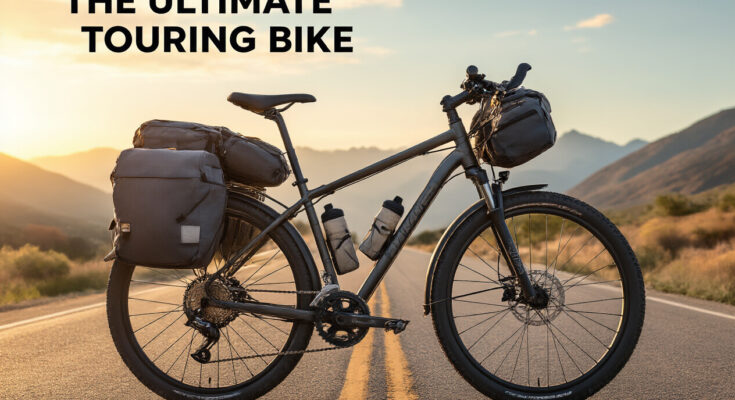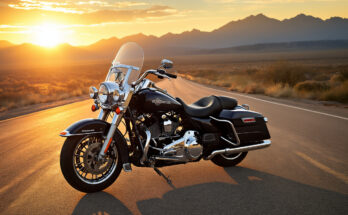Ever found yourself 60 miles into a cross-country trek with a sore back and a bike frame that’s wobbling under your gear? Been there. The difference between an epic adventure and a painful slog often comes down to one decision: choosing the right touring bike.
I’ve spent 15 years testing touring bikes across America’s diverse landscapes, from the smooth coastal highways of California to the punishing gravel roads of Colorado.
What makes the best touring bike in USA isn’t fancy paint jobs or trendy accessories. It’s the perfect blend of versatility to handle any terrain, durability that won’t leave you stranded in the middle of nowhere, and enough comfort to keep you pedaling day after day.
But here’s what most retailers won’t tell you about those sleek models in their showrooms…
Understanding Touring Bike Essentials
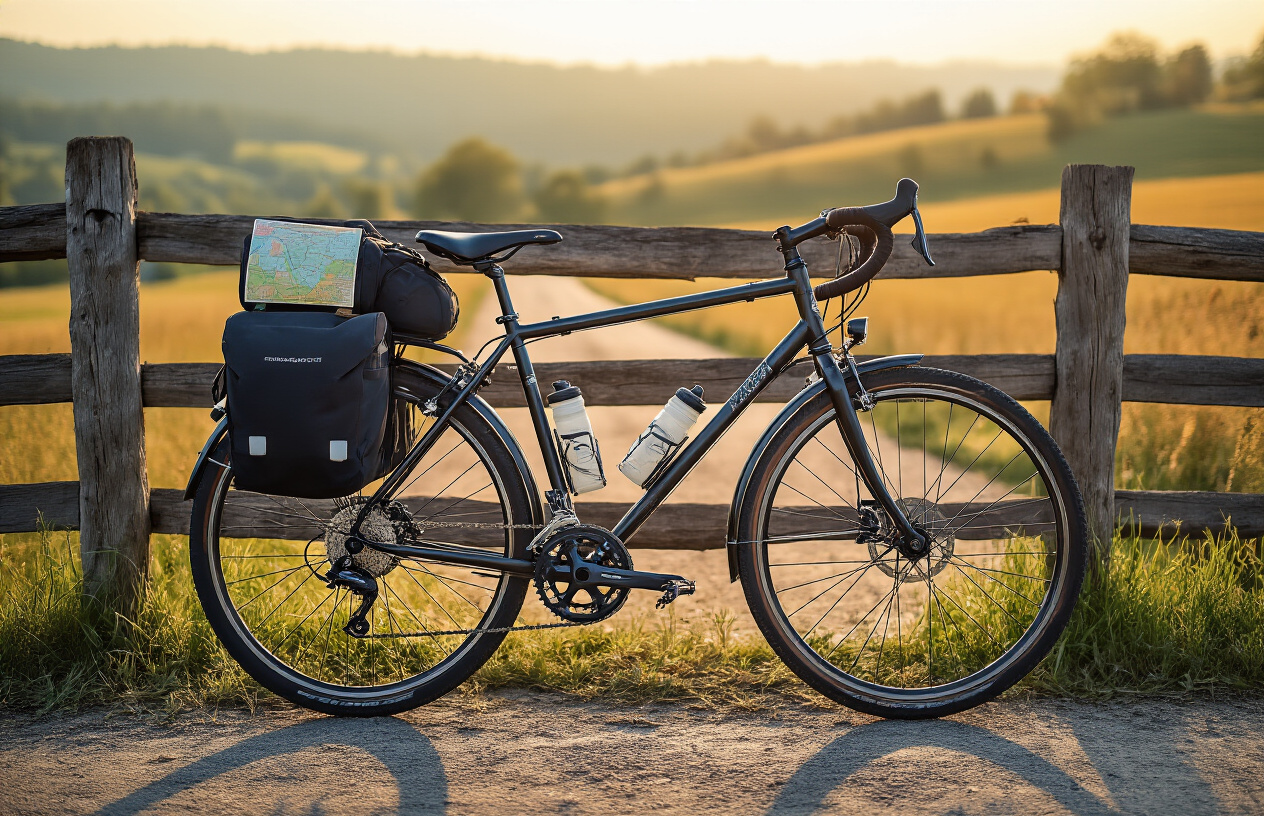
Key features that define a true touring bike
Ever noticed how touring bikes look different from your regular road bike? That’s because they’re built for the long haul – literally.
True touring bikes have stronger frames, typically made from steel or sometimes aluminum, that can handle heavy loads without complaining. They’re not trying to win races; they’re built to be your reliable companion for thousands of miles.
Look at the wheels – they’re usually 26-inch or 700c with extra spokes for strength. And those tires? Wider than road bikes (usually 32-38mm) to absorb bumps and provide stability when you’re carrying panniers full of gear.
The geometry tells you everything: longer wheelbases for stability, relaxed angles for comfort over speed, and higher handlebars to keep your back happy after 8 hours of riding.
Then there’s the gearing – touring bikes give you those super-low granny gears that’ll get you and your 50 pounds of gear up steep mountain passes. Triple cranksets aren’t outdated here; they’re essential.
How American roads influence touring bike design
American roads throw everything at cyclists. Smooth highways, potholed country roads, gravel sections, and everything in between.
That’s why the best touring bikes in the USA have evolved to handle this variety. They need more tire clearance than European models because our rural roads can suddenly turn to gravel or chip-seal.
The distance between towns is another factor. In Europe, you might find accommodations every 20-30 miles. Here? You might pedal 80+ miles between services, meaning your bike needs to carry more gear, food, and water.
American-designed touring bikes often feature:
- More mounting points for extra water bottles
- Stronger rear racks rated for heavier loads
- Slightly more upright positions for all-day comfort
- Disc brakes becoming standard for reliable stopping in varied terrain
Balancing performance with long-distance comfort
No one wants to ride a sluggish bike for weeks on end. But neither do you want something so aggressive that your back and neck scream after day three.
The sweet spot? A touring bike that responds when you want to push, but doesn’t punish you for sitting upright occasionally to take in the view.
This balance comes from thoughtful component choices. Brooks saddles might weigh more than racing seats, but your sit bones will thank you after 500 miles. Wider handlebars with multiple positions let you shift your weight throughout the day.
Suspension isn’t common on pure touring bikes, but many feature carbon or steel forks that absorb vibration naturally. Some even incorporate clever flex points in the frame to take the edge off rough roads without compromising load capacity.
The best touring bikes don’t feel like compromises – they feel like they were designed specifically for the adventure you’re on.
Versatility: The Heart of Superior Touring Bikes
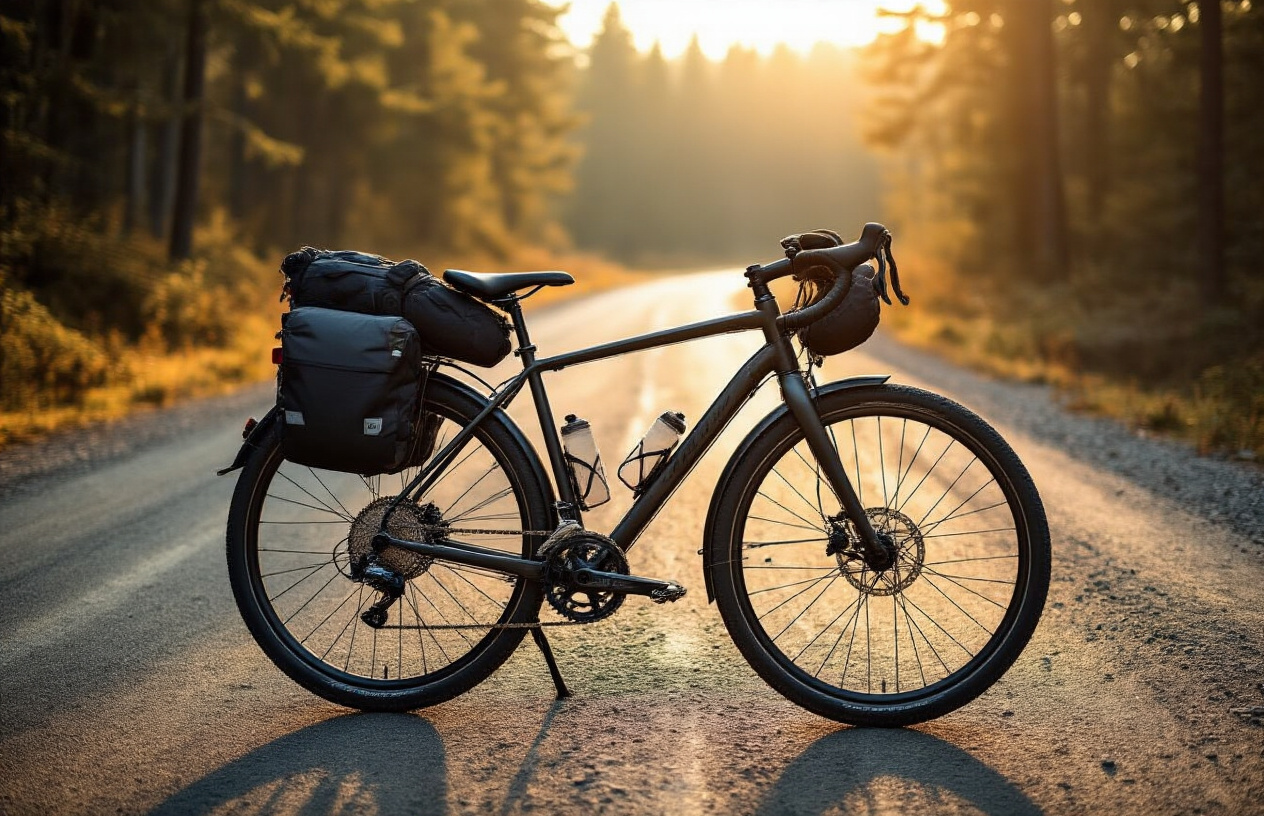
All-terrain capability for varied American landscapes
The perfect touring bike doesn’t flinch when the pristine asphalt suddenly turns to gravel. Or when that scenic byway becomes a dirt path. Because let’s be honest – the most breathtaking views in America rarely sit conveniently alongside perfect roads.
From the rugged Pacific Coast Highway to the rolling hills of the Blue Ridge Parkway, a top-tier touring bike handles it all. These bikes feature slightly wider tires (usually 32-42mm) with a tread pattern that grips multiple surfaces without dragging you down on pavement.
What separates good from great? The frame geometry. The best touring bikes sit in that sweet spot – relaxed enough to soak up bumps but responsive enough to navigate technical descents when you venture off the beaten path.
Cargo capacity without sacrificing handling
You’re packing for weeks, not hours. Your touring bike needs to carry your life without feeling like you’re steering a loaded truck.
Quality touring bikes distribute weight intelligently. Lower mounting points keep your center of gravity down where it belongs. When your panniers are fully loaded, the bike should still corner predictably.
Look for:
- Front and rear rack compatibility
- Multiple bottle cage mounts
- Accessory mounts on the fork
- Proper frame triangles for bag attachment
The difference between amateur and professional-grade touring bikes? How they handle when loaded. The best ones feel balanced whether you’re carrying camping gear for a month or just a change of clothes.
Weather adaptability for cross-country journeys
Ride across America and you’ll experience everything from desert heat to mountain thunderstorms – sometimes in the same day.
Superior touring bikes accommodate these extremes with:
- Full-length fender compatibility
- Water-resistant cable routing
- Reliable disc brakes that perform in wet conditions
- Drivetrain components that resist grit and moisture
Your touring bike shouldn’t just survive different weather conditions – it should perform consistently through them. Quality models use sealed bearings and corrosion-resistant materials that stand up to whatever Mother Nature throws at you.
Customization options for different touring styles
Some riders want speed. Others prioritize comfort. The best touring bikes adapt to your personal style.
Look for frames with:
- Multiple hand positions on handlebars
- Adjustable stem height
- Versatile gearing options
- Tire clearance flexibility
The beauty of a truly versatile touring bike is that it evolves with you. Maybe you start with traditional drop bars but later switch to butterfly bars for more upright comfort. Perhaps your first tour is credit-card style with minimal gear, but next year you’re tackling the Great Divide with camping equipment.
The finest touring bikes grow with your ambitions, accommodating your changing needs without requiring a completely new bike.
Durability Factors That Matter
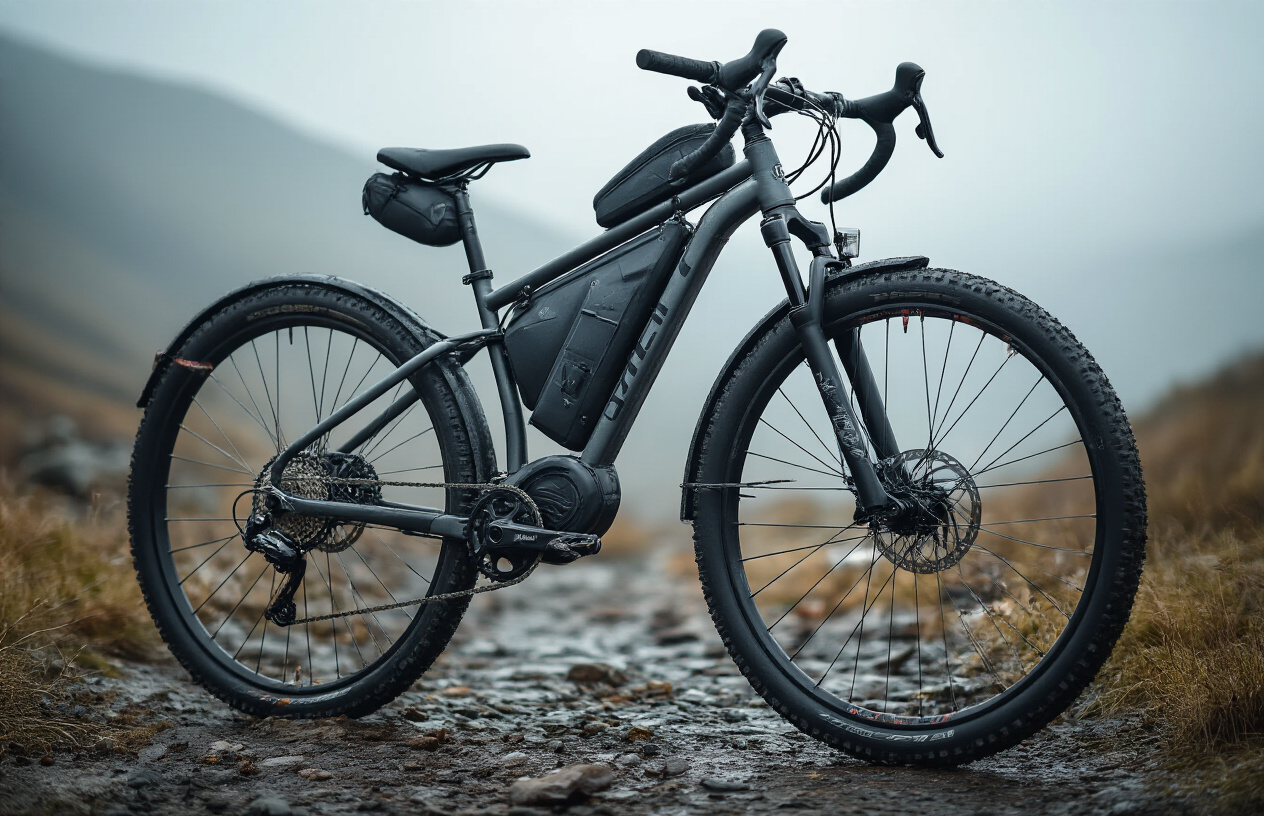
A. Frame materials that withstand thousands of miles
Steel isn’t just nostalgia talking – it’s still king for serious touring. Why? When you’re 500 miles from nowhere and your frame cracks, you want something any small-town welder can fix. Chromoly steel frames like those from Surly and Trek’s 520 model forgive abuse that would trash carbon or aluminum.
Titanium is the premium option if budget isn’t an issue. It’s basically immortal, won’t corrode, and rides like a dream. Brands like Moots and Lynskey make ti frames that owners pass down like heirlooms.
Aluminum has come a long way, but I’d still be cautious for transcontinental adventures. It’s light and stiff but can develop fatigue cracks with no warning.
B. Component longevity in challenging conditions
The best touring bikes use components that laugh at adversity. Shimano’s Deore XT groupset isn’t their fanciest, but mechanics worldwide will tell you it’s bombproof. Those fancy electronic shifters? They’re awesome until you can’t charge them in the backcountry.
Sealed cartridge bearings in hubs make the difference between smooth sailing and grinding to a halt. White Industries and Phil Wood hubs cost more upfront but will outlast multiple bikes.
Steel racks from Tubus can handle 80+ pounds without flinching. I’ve seen them survive crashes that destroyed everything else on the bike.
C. Maintenance considerations for extended trips
The perfect touring bike needs exactly zero proprietary parts. Standard-sized bolts, cables any bike shop stocks, and components you can service with basic tools – that’s what you want.
Bar-end shifters might seem old-school, but they’re virtually indestructible compared to integrated brake/shift levers. When they do wear out (eventually), they’re cheap to replace.
Cable-actuated disc brakes give you stopping power without the complexity of hydraulics. TRP Spyres and Avid BB7s are serviceable anywhere with basic tools.
Always choose threaded bottom brackets over press-fit for touring. They’re less prone to creaking and can be removed with portable tools when trouble strikes.
D. American-made options with proven reliability
Handbuilt in the USA still means something in the touring world. Bikes from Co-Motion in Oregon and Waterford in Wisconsin aren’t just patriotic purchases – they’re investments in craftsmanship.
Many American builders offer lifetime warranties because they stand behind their work. Rodriguez Cycles in Seattle builds custom touring rigs that customers ride for decades.
What you’re paying for isn’t just the name – it’s the meticulous attention to alignment, joint quality, and finish work that prevents problems 3,000 miles into your journey.
E. Tire selection for durability and performance
Tire choice can make or break your tour. The Schwalbe Marathon Plus might weigh a ton, but there’s a reason you’ll see them on bikes circling the globe – they’re nearly puncture-proof.
Width matters more than you think. 35-45mm tires give you the perfect balance of comfort, control and efficiency on varied surfaces. Anything narrower will limit where you can go.
Tubeless setups are finally reliable enough for touring. They seal small punctures automatically and let you run lower pressures for comfort without pinch flat risks.
For mixed-terrain touring, the Teravail Sparwood and Continental Tour Ride give you remarkable versatility without sacrificing durability. Remember, the best tire is the one that never leaves you stranded.
Comfort Features Worth the Investment
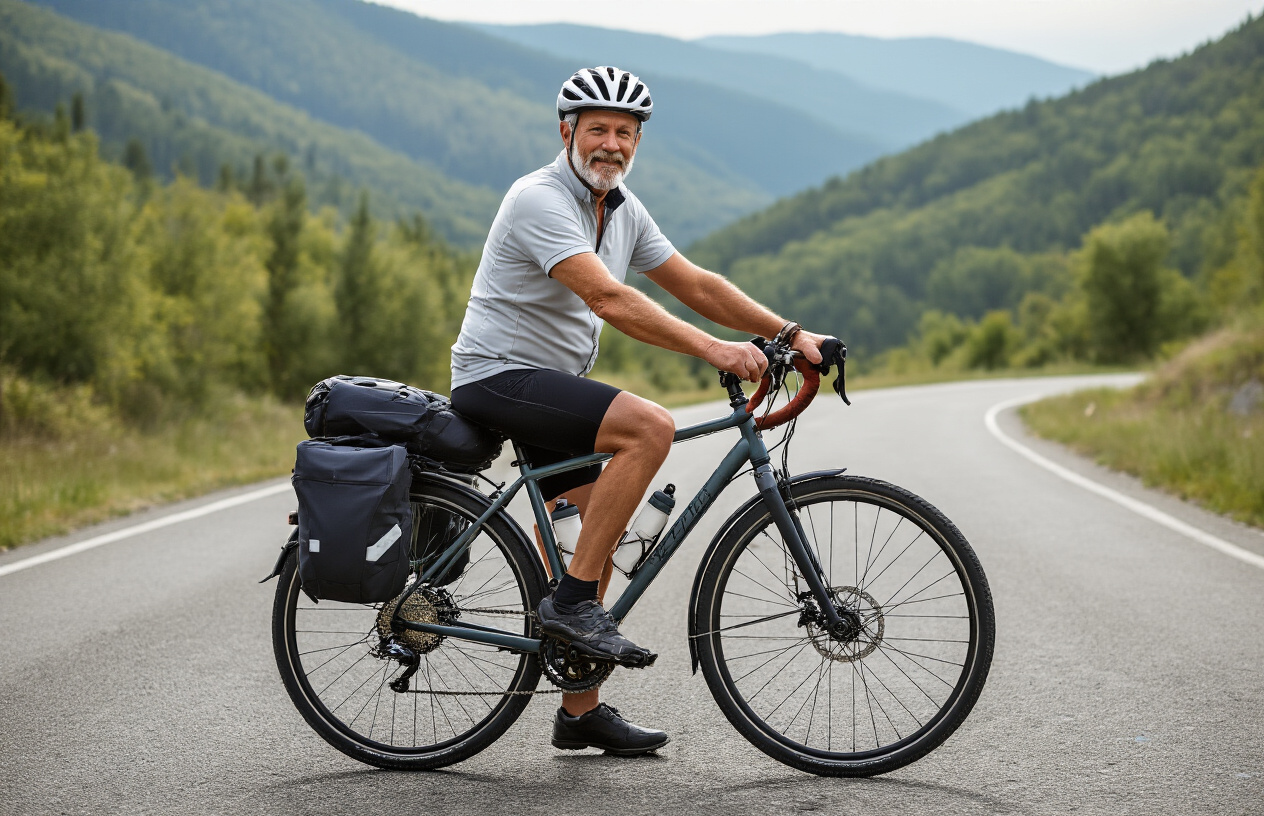
Ergonomic Contact Points That Prevent Fatigue
When you’re grinding out 80 miles a day for weeks on end, those three little spots where you touch your bike become everything. Your hands, feet, and butt will thank you for investing in quality contact points.
Handlebars make a massive difference. Drop bars give you multiple hand positions to switch between when your wrists start screaming. Some touring cyclists swear by butterfly bars that offer even more options. And don’t cheap out on bar tape – thick, cushioned tape is worth every penny when you’re eight hours into your day.
Saddles are deeply personal. What works for your buddy might torture you. The best touring saddles typically have a wider profile to support your sit bones properly. Brooks leather saddles have a cult following among tourers for good reason – they mold to your anatomy over time, creating a custom fit.
Vibration Dampening Technologies
Roads beat you up. That constant vibration seeps into your bones hour after hour until you’re absolutely wrecked. Smart bike builders know this.
Steel frames naturally absorb some road buzz, which explains why they’re so popular for touring. But modern carbon forks take things to another level, filtering out high-frequency vibrations before they reach your hands.
Wider tires at lower pressure act as your first line of defense. Running 35-45mm tires at 40-60psi creates a floating-on-air feeling that saves your body from punishment.
Proper Bike Fitting for Multi-Day Rides
Touring geometry isn’t like race geometry. You need a position you can maintain for 8 hours daily without your back staging a revolt.
A proper touring fit generally means:
- Slightly higher handlebars
- A bit less reach
- More stack height
- Longer chainstays for stability
Getting professionally fitted before a major tour is money well spent. What feels fine for a 2-hour ride might become unbearable by day three of your adventure.
Remember that fit changes as you ride. Your flexibility improves, and your position naturally adjusts. Build in some adjustment capability with spacers and stems that can be modified on the road.
Top Touring Bikes in the American Market
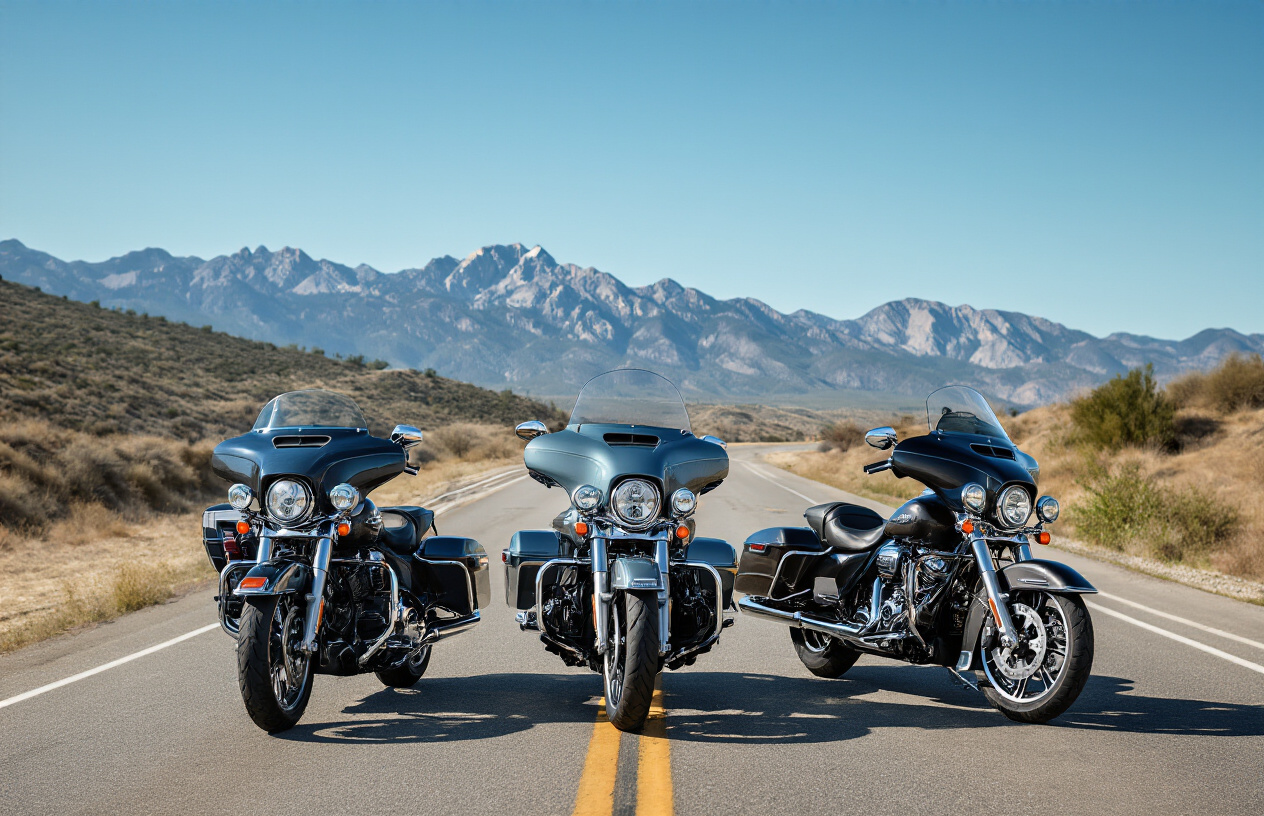
A. Best options under $1,500
When you’re just getting your feet wet with touring, you don’t need to empty your bank account. The Surly Long Haul Trucker dominates this category for good reason – it’s built like a tank but won’t cost you one. At around $1,350, you’re getting chromoly steel that absorbs road buzz and can handle loads that would make other bikes cry.
The Salsa Journeyman comes in even cheaper at about $1,100. While not a dedicated touring beast, it handles light-to-medium loads admirably and transitions nicely to commuting when you’re not crossing state lines.
Don’t sleep on the Marin Four Corners either. For under $1,300, you’re getting a versatile steel frame with plenty of mounting points for racks and fenders. The wider tire clearance means you can tackle rougher terrain when the pavement ends.
B. Mid-range champions ($1,500-$3,000)
This sweet spot is where touring bikes really shine. The Trek 520 at around $1,900 has been the gold standard for decades. The current model features bar-end shifters (more reliable when you’re 100 miles from nowhere) and a frame geometry that stays comfortable after eight hours in the saddle.
Kona’s Sutra at $2,200 brings disc brakes and a more aggressive riding position for those who want speed with their touring capability. Their stock racks are surprisingly good—unlike the flimsy afterthoughts some manufacturers bolt on.
Co-Motion Cascadia hits the upper end of this range at $2,800, but you’re getting American-made quality and customization options that mass-produced bikes can’t match. Their attention to welding detail and component selection is immediately apparent when you’re grinding up mountain passes.
C. Premium touring machines for serious adventurers
When money’s no object and the road calls, these bikes answer with authority. The Thorn Nomad Mk3 will set you back about $3,500, but it’s essentially indestructible. The Reynolds 853 steel frame can handle loads approaching 400 pounds, and the rohloff hub means virtually zero maintenance for 25,000+ miles.
Rivendell’s Atlantis ($4,200) isn’t just a bike—it’s practically art. Hand-brazed in small batches, these bikes feature custom geometries and thoughtful touches like triple water bottle mounts and clearance for massive tires.
For those seeking the ultimate in customization, Seven Cycles’ Expat S ($6,000+) offers titanium frames built specifically to your measurements. The ride quality is otherworldly—resilient yet responsive—and the frames come with a lifetime warranty.
D. Best value for money choices
The Jamis Aurora Elite punches way above its $1,400 price tag. The Reynolds steel frame, reliable Shimano 105 components, and included rear rack make it ready for adventure straight from the shop.
For $1,800, the Fuji Touring Disc delivers hydraulic brakes, a bombproof wheelset, and frame geometry that’s been refined over decades. You could spend twice as much and not get significantly better performance.
The wild card here is the REI Co-op ADV 2.1 at $1,299. While REI might not have the heritage of other brands, they’ve quietly created an excellent touring platform with surprising component quality and thoughtful features like dynamo hub compatibility.
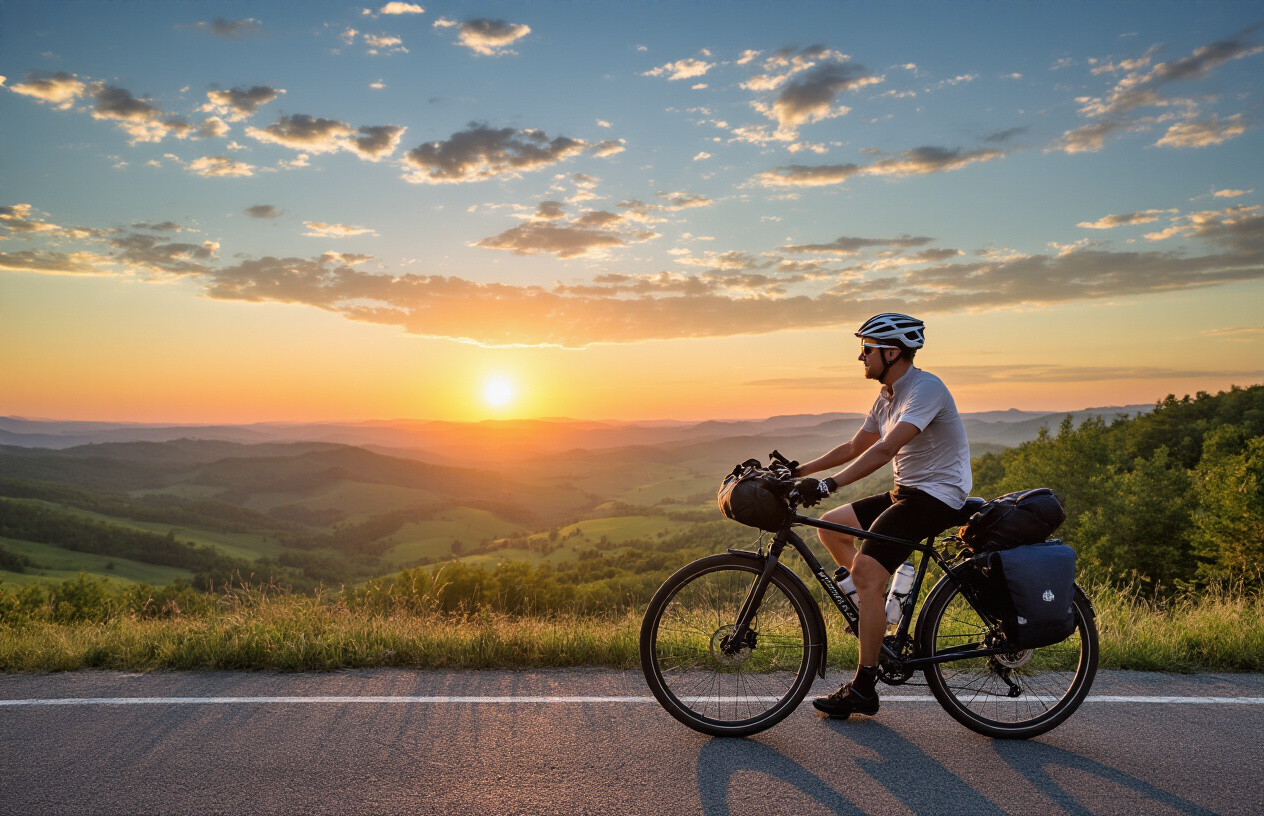
The perfect touring bike for American adventurers strikes an essential balance between versatility, durability, and comfort. As we’ve explored, versatility allows you to tackle diverse terrains across the country’s varied landscapes, while robust construction ensures your bike withstands thousands of miles without failing when you’re far from assistance. Thoughtful comfort features transform what could be punishing long-distance rides into enjoyable journeys that your body can sustain day after day.
Whether you’re drawn to the reliability of Surly’s Long Haul Trucker, the refined engineering of a Co-op Cycles ADV, or another top contender we’ve discussed, remember that the best touring bike is ultimately the one that matches your specific travel style and planned adventures. Take time to test ride several models, focusing on how they handle when loaded with gear. Your perfect touring companion awaits—ready to carry you reliably through countless American landscapes and the unforgettable experiences they contain.

